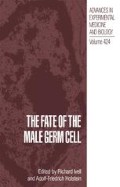Abstract
It is well recognized that mitochondria of germ cells modify their morphological organization, number and location during spermatogenesis. Mitochondria gradually transform from the usual cristae-rich (“orthodox”) type found in the various types of spermatogonia via an intermediate form located in leptotene and zygotene spermatocytes into a so-called “condensed-type” found in pachytene spermatocytes and early spermatids. In pachytene spermatocytes, the mitochondria are grouped together in small clusters. The intramembranous space is greatly enlarged, with the membrane pushed to the periphery leaving almost no cristae. The matrix is condensed to a thin ring-like structure underneath the outer membrane leaving the interior of these mitochondria looking “empty”. In early round spermatids, the mitochondria retain the “empty” central regions, but later in spermatogenesis, more cristae become evident. Very little is known about the factors that regulate or trigger the various steps of mitochondrial differentiation during sperm production. Recent studies from our group (Meinhardt et al., 1995; Seitz et al.,1995) indicate the involvement of proteinaceous factor(s), termed paracrine mitochondrial maturation factors (PMMF), which are secreted by Sertoli cells and act in a paracrine fashion on primary spermatocytes. However, the study of factors that induce the differentiation of mitochondria in isolated leptotene and zygotene spermatocytes is hampered by low numbers of this cell type in rat testis. Mitochondrial differentiation is accompanied by the step-wise occurrence of three marker proteins in the matrix, each typical for a distinct organelle form: heat shock protein 60 (hsp60) for orthodox mitochondria mainly in spermatogonia, LON-protease in leptotene and zygotene spermatocytes and sulfhydryl oxidase (SOx) for the condensed type in pachytene spermatocytes and early round spermatids (Seitz et al, 1995). The immortalized germ cell line GC- lspg has been characterized at a stage between B spermatogonia and an early primary spermatocyte, while the GC-2spd line encompasses germ cells from mid to late meiosis (Hofmann et al, 1992; 1994).
Access this chapter
Tax calculation will be finalised at checkout
Purchases are for personal use only
References
Hofmann MC, Narisawa S, Hess RA & Millán JL. 1992 Immortalization of germ cells and somatic testicular cells using the SV40 Large T Antigen. Experimental Cell Research 201: 417–435.
Hofmann MC, Hess RA, Goldberg E & Millán JL. 1994 Immortalized germ cells undergo meiosis in vitro. Proceedings of the National Academy of Sciences 91: 5533–5537.
Meinhardt A, Parvinen M, Bacher M, Aumtiller G, Hakovirta H, Yagi A & Seitz 1995 Expression of the mitochondria) heat shock protein 60 in distinct cell types and defined stages of rat seminiferous epithelium. Journal of Biological Reproduction 52: 798–807.
Seitz J, Möbius J, Bergmann M & Meinhardt A. 1995 Mitochondrial differentiation during meiosis. International Journal of Andrology 18 Supp1. 2: 7–11.
Author information
Authors and Affiliations
Editor information
Editors and Affiliations
Rights and permissions
Copyright information
© 1997 Springer Science+Business Media New York
About this chapter
Cite this chapter
Meinhardt, A. et al. (1997). The Immortalized Mouse Germ Cell Lines GC-1spg and GC-2spd as a Model for Mitochondrial Differentiation during Meiosis. In: Ivell, R., Holstein, AF. (eds) The Fate of the Male Germ Cell. Advances in Experimental Medicine and Biology, vol 424. Springer, Boston, MA. https://doi.org/10.1007/978-1-4615-5913-9_8
Download citation
DOI: https://doi.org/10.1007/978-1-4615-5913-9_8
Publisher Name: Springer, Boston, MA
Print ISBN: 978-1-4613-7711-5
Online ISBN: 978-1-4615-5913-9
eBook Packages: Springer Book Archive

